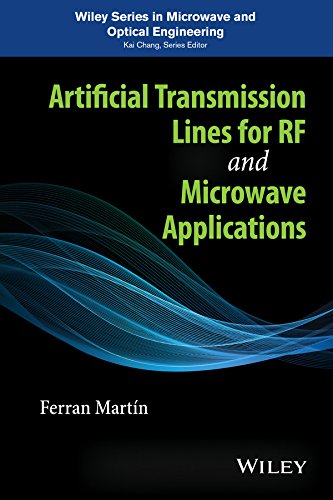

Most ebook files are in PDF format, so you can easily read them using various software such as Foxit Reader or directly on the Google Chrome browser.
Some ebook files are released by publishers in other formats such as .awz, .mobi, .epub, .fb2, etc. You may need to install specific software to read these formats on mobile/PC, such as Calibre.
Please read the tutorial at this link: https://ebookbell.com/faq
We offer FREE conversion to the popular formats you request; however, this may take some time. Therefore, right after payment, please email us, and we will try to provide the service as quickly as possible.
For some exceptional file formats or broken links (if any), please refrain from opening any disputes. Instead, email us first, and we will try to assist within a maximum of 6 hours.
EbookBell Team

0.0
0 reviewsThis book presents and discusses alternatives to ordinary transmission lines for the design and implementation of advanced RF/microwave components in planar technology.
This book is devoted to the analysis, study and applications of artificial transmission lines mostly implemented by means of a host line conveniently modified (e.g., with modulation of transverse dimensions, with etched patterns in the metallic layers, etc.) or with reactive loading, in order to achieve novel device functionalities, superior performance, and/or reduced size.
The author begins with an introductory chapter dedicated to the fundamentals of planar transmission lines. Chapter 2 is focused on artificial transmission lines based on periodic structures (including non-uniform transmission lines and reactively-loaded lines), and provides a comprehensive analysis of the coupled mode theory. Chapters 3 and 4 are dedicated to artificial transmission lines inspired by metamaterials, or based on metamaterial concepts. These chapters include the main practical implementations of such lines and their circuit models, and a wide overview of their RF/microwave applications (including passive and active circuits and antennas). Chapter 5 focuses on reconfigurable devices based on tunable artificial lines, and on non-linear transmission lines. The chapter also introduces several materials and components to achieve tuning, including diode varactors, RF-MEMS, ferroelectrics, and liquid crystals. Finally, Chapter 6 covers other advanced transmission lines and wave guiding structures, such as electroinductive-/magnetoinductive-wave lines, common-mode suppressed balanced lines, lattice-network artificial lines, and substrate integrated waveguides.
Artificial Transmission Lines for RF and Microwave Applications provides an in-depth analysis and discussion of artificial transmission lines, including design guidelines that can be useful to researchers, engineers and students.